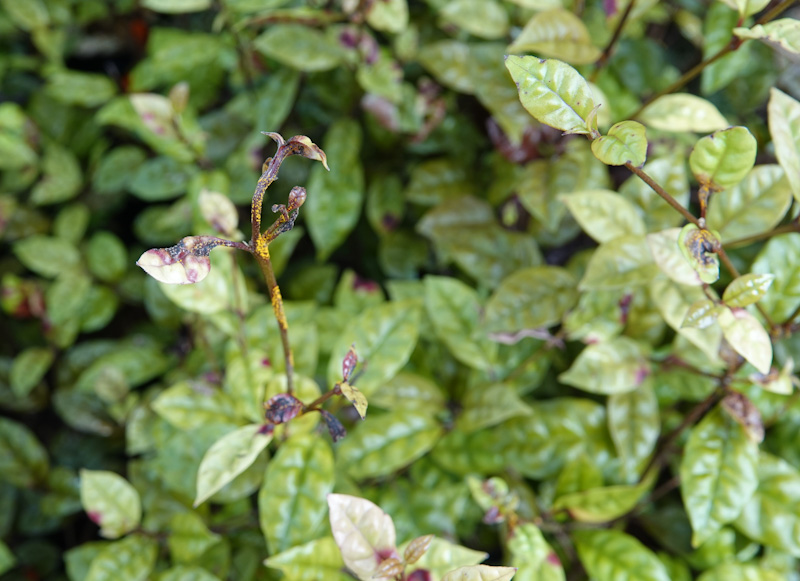Working with Scion to understand Lophomyrtus reproduction
Ramarama (Lophomyrtus bullata) and rōhutu (Lophomyrtus obcordata) are particularly susceptible to myrtle rust infection, with full tree death of ramarama first reported in 2020. It is critical we understand the reproduction of these species to ensure their survival.

Ngā Rākau Taketake is undertaking a suite of research activities to assess Lophomyrtus reproduction. This research began with observations in the ngahere by Roanne Sutherland, former Scion researcher who recently moved to the National Plant Pathogens Team at the Department of Conservation (DOC). After finding infected ramarama fruit in the field, Roanne wanted to know how often fruits became infected, what happened to new fruit that was infected, and if infected fruit that matured were still able to produce seeds that germinated and grew.
DOC funded a preliminary study in 2018 that jump-started Roanne’s research on this topic, and NRT has continued to fund this research as it has developed. Now that Roanne has transitioned into her new role at DOC, this research and additional studies are being continued by her colleagues at Scion – Julia Soewarto, Michael Bartlett, Andrew Cridge and summer student Isabella Ellmers.
Researchers are monitoring the production of flower buds, flowers, immature fruits and mature fruits of ramarama, rōhutu and their natural hybrids in the ngahere in the Bay of Plenty, working with mana whenua of Ngāti Tamateatutahi and Ngāti Kawiti hapū. When the fruits are ripe, a subsample of available fruits is gathered and taken to the lab to see if they are viable.
There have been two interesting preliminary findings. Researchers have observed that when fruits become infected, many of them drop prematurely. By the end of the season, about 90% of fruit (and in some plots all fruits) prematurely drops. This highlights the huge impact myrtle rust is having on the potential of ramarama and rōhutu to reproduce naturally in the wild in the presence of myrtle rust. Researchers suspect that these species could become functionally extinct in some areas, as trees will no longer be able to produce viable flowers and fruits.
But it’s not all bad news. Although findings are preliminary, there is evidence that seeds within infected fruit that survive to maturity are still viable. While seeds from uninfected fruits are far more viable, seeds from infected fruit still have some viability. This early finding helps inform management actions – if plants need to be grown from seed, managers can rest a little easier knowing that they can collect infected fruits and still have some of these yield seeds that will germinate and grow.
In addition to this research, NRT is also funding two Scion summer student projects on Lophomyrtus reproduction. One project will investigate the pollinators of Lophomyrtus to get an idea of which organisms could be potential vectors of the pathogen. Pollinators will also be impacted if Lophomyrtus no longer produces flowers. The second project is based on the field observation that it is the trees on the forest’s edge that flower and fruit. This project will look at the light requirements for flowering and fruiting in Lophomyrtus.
Posted November 2021